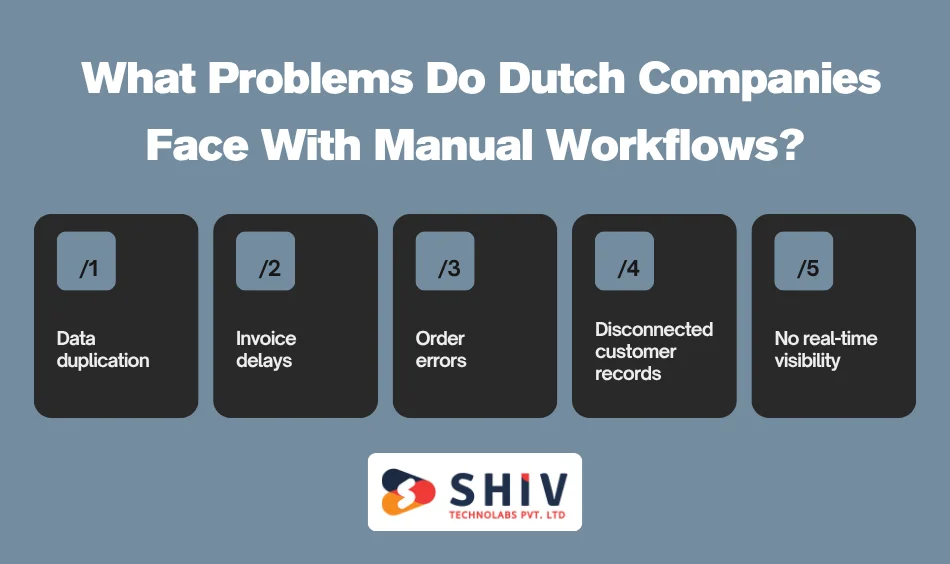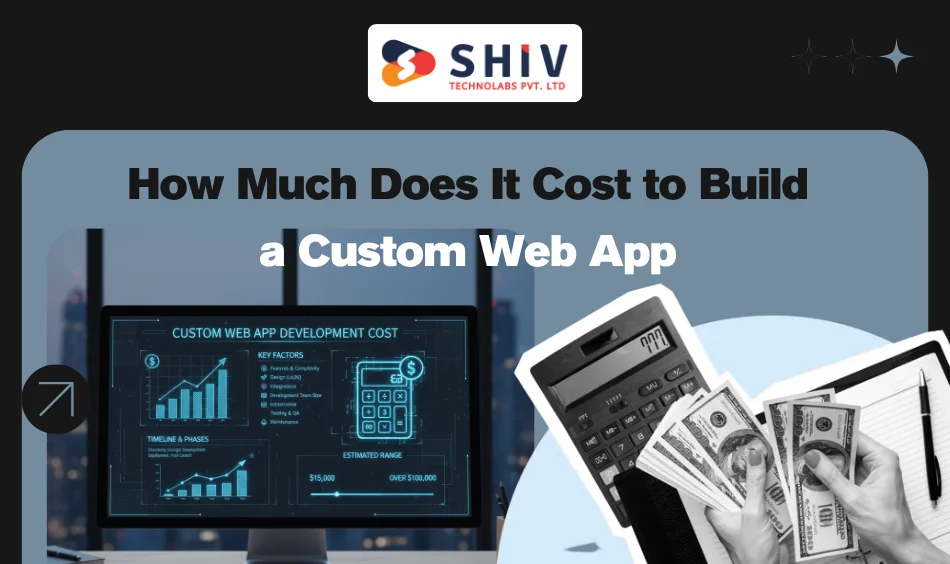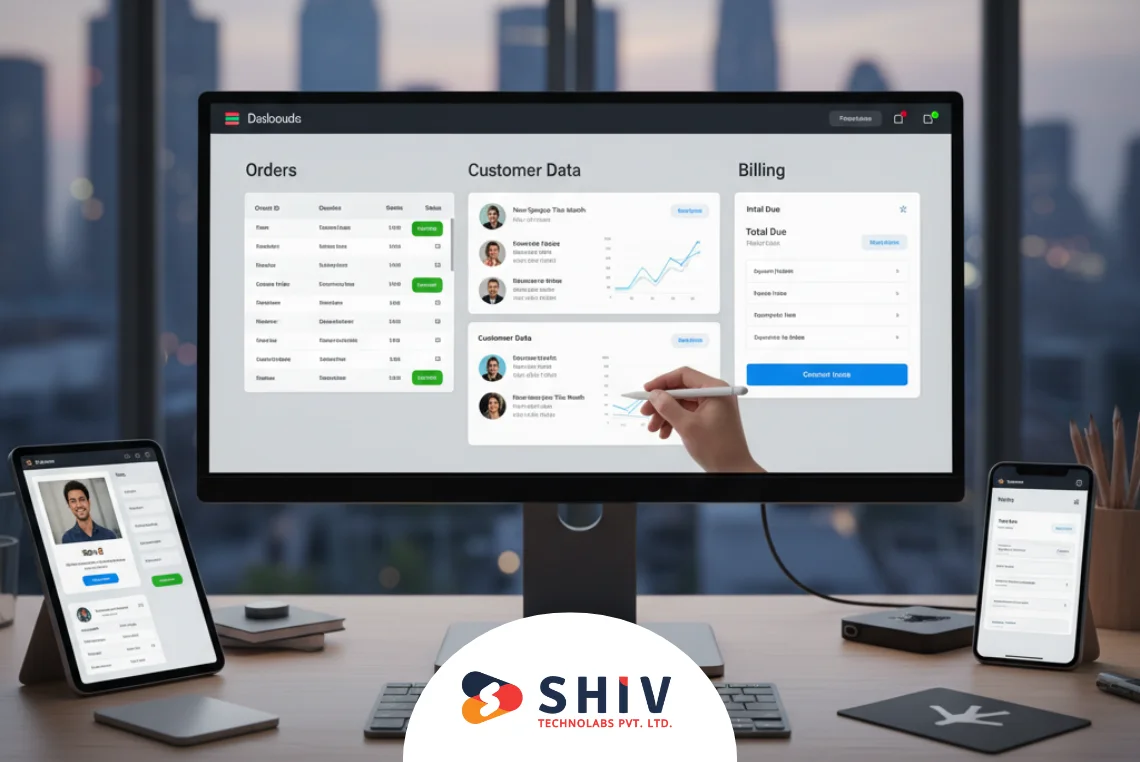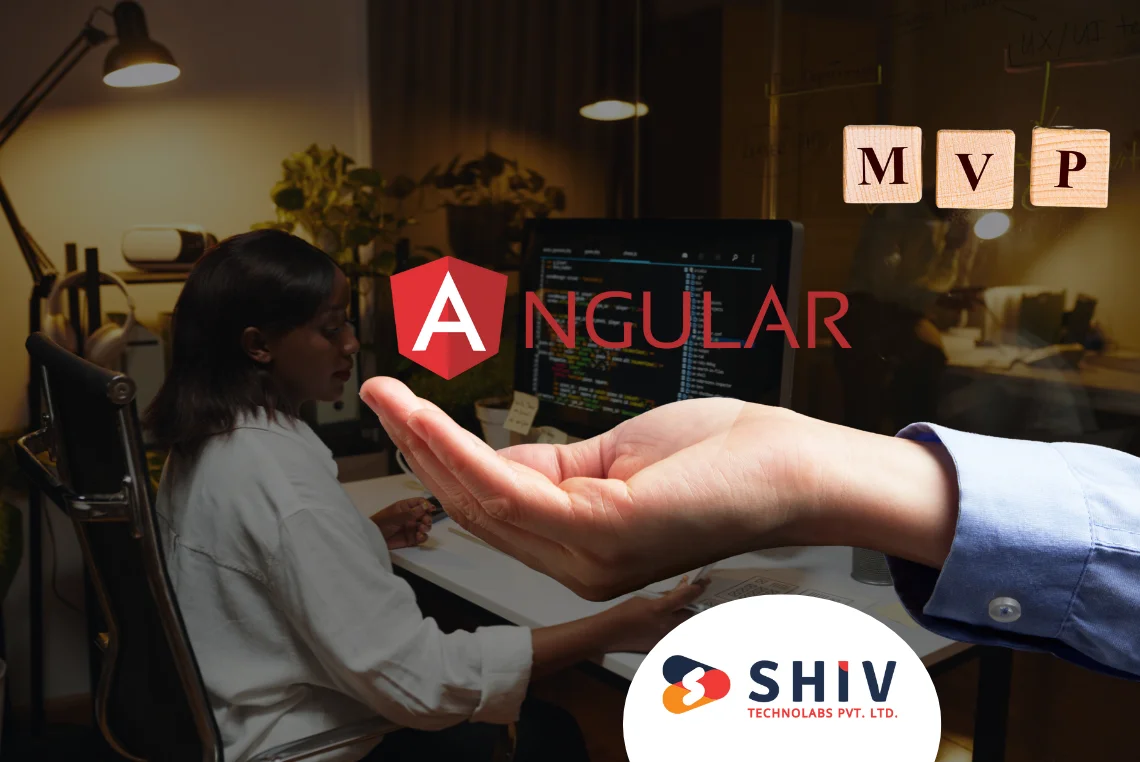Table of Contents
Dutch teams want clean operations, quick handoffs, and clear cash flow. Many now choose Python development services in Netherlands to build a single system for orders, customers, and billing. When data sits in emails and sheets, numbers drift, and staff spend hours fixing avoidable mistakes. A purpose-built web app places every record in one reliable place.
With one platform, your staff tracks orders from quote to payment, with every step linked to customer history. Finance sees accurate invoices and payments without chasing updates. Sales and support work from the same profile, so replies are fast and consistent. Leaders get current figures, not yesterday’s guesses.
This change is practical, not hype. The app reflects Dutch payment habits and BTW rules, so invoicing feels natural for your team and your clients. You decide which modules matter today, then add more as volume grows. Build order capture, inventory sync, and collections into one flow, and cut rework from day one. The payoff is simple: fewer errors, faster billing, and a system that grows with your goals.
Why Do Dutch Businesses Need a Custom Web App for Orders, Customer Data & Billing?
Growth exposes the limits of scattered tools. New channels add more orders, more notes, and more versions of the truth. Teams copy data between systems and lose track of who changed what. Customers wait for updates, and finance waits for complete numbers. A central platform replaces that drag with clear workflows and a single record for each customer and order.
A web app built around your process gives every team the same facts in real time. Sales enters an order once, stock updates automatically, and finance receives ready-to-send invoices. Support checks one profile and answers with confidence. Leaders watch live dashboards for revenue, aging, and risk, then act without guesswork.
Local context matters. Dutch clients expect iDEAL, SEPA, and correct BTW on each invoice. The right platform fits those needs on day one, so staff spend less time on workarounds. If you plan integrations with ERP, carriers, or marketplaces, the same core system handles those links cleanly. With custom web app development in Netherlands, you shape the workflow to match how your teams actually work, not the other way around.
What Problems Do Dutch Companies Face With Manual Workflows?

Manual steps feel manageable at first, then volume turns small issues into daily headaches. Staff re-enter the same details across sheets, inboxes, and forms. Numbers drift, and customers spot mistakes before your team does. Approvals move slowly because no one sees the full picture. Finance spends evenings reconciling partial records, and leaders wait for late summaries.
- Data duplication
- Invoice delays
- Order errors
- Disconnected customer records
- No real-time visibility
How Does a Custom Web App Solve These Issues?
A tailored platform replaces scattered files with one source of truth. Staff enter order details once, and the system updates stock, invoices, and status automatically. Customer profiles collect every touchpoint, so sales, support, and finance answer with the same facts. Billing runs on rules that match BTW requirements, with reminders that keep cash moving.
Dashboards show live revenue, aging, and exceptions, so managers act quickly. Clear permissions protect sensitive data while giving each role the tools they need. With this foundation, your team moves faster, makes fewer mistakes, and serves customers with confidence.
What Features Should a Custom Web App Include for Dutch Companies?
A custom Python web app should centralize the flow from order capture to paid invoice. Your staff needs clear roles, linked customer history, and accurate stock levels. The app should connect sales, support, and finance with the same record for every action.
You also need a modular setup that fits Dutch payments and BTW rules. Add iDEAL and SEPA, then connect carriers, marketplaces, or ERP as growth demands. A flexible core lets you add new sales channels without tearing up existing work. This sets a strong base for scale.
An order management system in Netherlands must support real-time status, returns, and partial shipments. Your team should process exchanges, backorders, and credit notes with minimal effort. Clear dashboards show orders, aging invoices, and exceptions, so managers act quickly. That clarity reduces rework and keeps customers happy.
What Should the Order Management Module Include?
- Order lifecycle tracking
- Inventory sync
- Shipment status updates
- Staff role permissions
These essentials help teams move work from quote to dispatch without guesswork. Inventory stays current across channels, and shipment data returns to the order in real time. Role permissions keep finance tasks separate from warehouse actions while still sharing context. With these controls, staff handle peaks without losing accuracy.
How Should Customer Data Be Organized?
Structure profiles with company details, contacts, and billing preferences. Store purchase history, returns, and open balances on the same page. Add segmentation tags for region, industry, and order size to guide campaigns and pricing. Keep notes from sales and support visible to finance during invoicing. With this setup, every team views the same story, so responses stay quick and consistent.
What Billing Automation Features Are Required?
A strong billing automation software in Netherlands should include:
- Automatic invoice creation
- BTW tax calculation
- Payment reminders
- PDF generation
- Multi-currency support
Tie invoice creation to order events, then apply BTW rules based on product and customer type. Send reminders on a schedule that suits your terms, and attach branded PDFs. Add EUR by default, with other currencies for cross-border deals. These features speed up cash collection, reduce mistakes, and give finance a clear month-end path. For deeper payment work, see our Django payment integration guide.
Why Is Python Ideal for Building This System?
Python speeds product delivery while keeping code clean and maintainable. A custom Python web app gives you mature frameworks, strong testing tools, and a huge library set. Your team can add features quickly and keep technical debt under control. That matters when orders rise and you must respond without chaos.
How Does Python Support Fast Development?
Django and Flask offer proven patterns for models, views, and routing. You get admin panels, form handling, and migrations out of the box. Popular libraries cover payments, PDFs, and background jobs. Your team builds real features instead of reinventing foundations. Faster cycles mean quicker feedback and better results.
How Does Python Improve Security & Data Handling?
Python supports strict validation, strong encryption, and proven auth flows. Django adds protections against common web threats and keeps session handling stable. You can log access to sensitive records and set fine-grained permissions per role. Combined with careful data mapping and clear consent flows, this approach supports GDPR duties. Auditable trails help your team answer questions from clients and auditors with confidence.
How Much Does It Cost to Build a Custom Web App in the Netherlands?

The cost to build a Python web app in Netherlands depends on scope, integrations, and team model. A simple MVP with orders, customer profiles, and basic billing lands at the lower range. A full platform with ERP links, carrier APIs, and advanced permissions moves toward the higher band.
Feature depth and third-party systems drive hours quickly. Payments, BTW rules, and multi-currency are common, yet each business adds unique details. Timelines scale with modules, test coverage, and data migration, so plan for phased releases. Launch a core set first, then ship upgrades every few weeks for steady gains.
Local teams bring face-to-face workshops and fast context transfer. Rates are higher, yet decisions move quickly, and rework drops. Offshore partners reduce rates and add larger squads for parallel work. You will still need clear specs, strong demos, and tight QA to keep quality high.
Pick a model that fits risk, speed, and budget. Use a fixed price for well-defined modules, and time-and-materials for discovery or complex links. Keep milestones short, accept frequent demos, and track metrics like order cycle time, invoice aging, and defect rate. That cadence protects the budget and delivers visible progress.
Cost Table
| Module / Workstream | Typical Range (EUR) | Notes |
|---|---|---|
| Order management | 8,000–20,000 | Status flow, returns, partials |
| Customer data | 5,000–12,000 | Profiles, roles, segments |
| Billing automation | 7,000–18,000 | BTW rules, reminders, PDFs |
| UI/UX | 3,000–10,000 | Design system, dashboards |
| Integrations | 4,000–15,000 | Payments, carriers, ERP |
| QA & security | 3,000–9,000 | Tests, hardening, logs |
| Support & handover | 2,000–6,000 | Docs, training, warranty |
What Are the Steps to Build a Custom Web App in the Netherlands?
Step 1 – Requirements & Workflow Analysis
Map your order paths, billing cycles, and customer touchpoints with actual users. Capture exceptions, approvals, and BTW cases in plain language. This clarity reduces waste later and anchors estimates. It also guides custom web app development in Netherlands toward real outcomes, not abstract wish lists.
Step 2 – Architecture & Tech Planning
Define modules, data models, and role permissions before writing code. Pick Django or Flask, task queues, and a document pipeline for PDFs. Confirm logging, backups, and audit trails. Plan migrations for legacy data with repeatable steps and clear rollback points, then agree success criteria per module.
Step 3 – Module Development (Orders, Customer Data, Billing)
Ship features in short sprints with demos every one to two weeks. Build orders first, then profiles, then invoicing with BTW logic. Add dashboards, role controls, and background jobs. Keep release notes crisp, track defects, and measure order cycle time to guide the next sprint.
Step 4 – Dutch Payment & Tax Integration
Add iDEAL, SEPA, and Dutch bank links with test accounts and sandbox flows. Validate BTW rules by product and customer type. Confirm invoice numbering, credit notes, and exports for accounting. Document edge cases for refunds, partials, and failed payments. For engineering details, see Django payments with Stripe.
Step 5 – Testing, Security, Deployment
Run automated tests, harden permissions, and review logs. Prepare rollout and training. Track post-launch metrics and plan quick fixes.
Testing checklist:
- Load testing
- Security testing
- Payment testing
- API validation
Should You Hire Python Developers in the Netherlands or Outsource?
Team structure affects speed, cost, and handoff quality. If you plan workshops with Dutch stakeholders, local hiring fits well. You get face-to-face sessions, quick feedback, and less context loss. Time zones match, so demos and fixes move fast.
Outsourcing reduces hourly rates and adds bigger squads for parallel work. You can scale up during peak sprints, then scale down after launch. This helps when you want rapid feature delivery without long-term overhead. Strong specs and clear roles keep quality high.
Hybrid models combine a local lead with an offshore team. The local lead runs workshops, writes crisp tickets, and owns reviews. The offshore squad ships code and tests on a fixed cadence. This model improves velocity while keeping direction close to your business.
Pick the model that suits risk tolerance and budget. If the scope includes complex Dutch payment rails and audits, plan for extra review time. If you need quick wins, phase releases, and to measure cycle time, defect rate, and invoice aging.
Comparison Table
| Factor | Local Hiring | Outsourcing |
|---|---|---|
| Cost | Higher rates | Lower rates |
| Communication | Same time zone | Needs overlap hours |
| Timeline | Fast decisions | Scales team quickly |
| Expertise | Local payment norms | Broad tech coverage |
Use this rule of thumb: if workshops and audits drive success, hire Python developers in Netherlands. If speed and cost drive success, use a hybrid or outsource-first plan.
When to Choose Local Developers?
Pick local talent when process discovery needs whiteboard sessions with sales, finance, and warehouse teams. Complex BTW rules, Dutch banking, and strict audit trails benefit from on-site reviews. Your staff can test flows in real offices, and feedback loops stay short. Local teams also help during go-live days with quick fixes. If your roadmap includes sensitive integrations and board-level reporting, local hiring reduces missteps and shortens decision time.
When Is Outsourcing the Better Option?
Choose outsourcing when you want rapid delivery at a lower hourly rate. A strong offshore partner adds more engineers for parallel modules like orders, billing, and reporting. This suits well-defined specs, test plans, and CI pipelines. Ask for weekly demos, daily standups, and a named QA lead. Keep a product owner on your side to accept work and write clear tickets. Use a hybrid model if you need Dutch payment or tax reviews. A local lead manages discovery and approvals while the offshore team ships code on a tight schedule.
How to Choose the Right Partner for Custom Python Development?
Choose a partner who listens first, documents your goals, and writes a clear, testable plan. Shiv Technolabs runs a short discovery, delivers a written scope, and sets milestone dates you can track. We share sample dashboards and invoice flows before sign-off, so stakeholders see real workflows early. Our engineers carry hands-on experience with Dutch gateways, BTW logic, and accounting exports used by finance teams.
We provide post-launch care and training, helping your staff adopt new processes with confidence. Prefer local contact? We can assign a Dutch project lead who understands payment habits, audits, and sector terms. Want tighter cost control? Pick a hybrid model with weekly budget reports, measurable deliverables, and clear acceptance criteria. Ask for a pilot sprint with Shiv Technolabs to check pace, quality, and collaboration before a larger commitment.
What Questions Should You Ask Before Hiring?
- Past Python projects
- Tech stack
- Security approach
- Integration experience
Ask for client references and demo links. Request a sample risk log and test plan. Confirm ownership of code and documentation. Review support terms and response times. Align on reporting, sprint length, and demo cadence. Clear expectations prevent friction later.
What Skills Should a Good Team Have?
Seek strong Python and Django skills, plus REST APIs for clean integrations. The team should know Dutch payment systems, iDEAL, and SEPA flows. Data modeling matters for orders, invoices, and audit trails. Ask for background jobs, PDF rendering, and role permissions experience. Add logging, metrics, and alerting to support busy seasons. This skill mix keeps your platform stable during growth.
How Can a Custom Web App Improve Efficiency for Dutch Businesses?
Automation cuts manual entry and shortens the path from order to paid invoice. Staff enter details once, and the system updates stock, status, and billing. Errors drop because each team views the same record. Finance gets accurate invoices and faster collections with scheduled reminders. Customers receive clear updates, so support calls decrease. Leaders watch live dashboards for orders, revenue, and risks. This clarity drives quick actions and fewer bottlenecks. The result is simple: faster cycles, lower rework, and happier clients.
Which Dutch Industries Benefit the Most From These Systems?
Many sectors need a strong order management system in Netherlands to keep pace with daily volume. The same core platform supports varied needs across:
- Retail
- Wholesale
- Logistics
- Manufacturing
- B2B distributors
- E-commerce sellers
Each industry gains from connected orders, clean profiles, and reliable billing. Add carrier links for logistics, BOM support for manufacturing, or contract pricing for B2B. The platform adapts as your volumes rise.
Conclusion
A tailored platform connects orders, profiles, and billing in one reliable flow. Your team works faster, errors fall, and cash comes in on schedule. You get local payment rails, correct BTW, and dashboards that guide daily decisions. If you want clear results without guesswork, partner with a trusted Python development Company in Netherlands. Ask for a short discovery, milestone plan, and a pilot sprint. Then scale features based on real metrics. With the right team, your web app becomes the core engine for growth.
FAQs
How long does a custom web app take to build?
Most projects need eight to sixteen weeks, based on scope and integrations.
Can Python handle real-time order tracking for Dutch retailers?
Yes, with queues, webhooks, and event logs for timely updates.
Does the system support iDEAL, SEPA, and Dutch banks?
Yes, add gateways and bank links with test accounts and sandbox flows.
How does the app manage Dutch BTW tax rules?
Use rule sets by product and customer type, with auditable invoice logic.
Is Python secure for customer data and billing?
Yes, with strong validation, permissions, encryption, and access logs.
Can the web app integrate with existing ERP or POS tools?
Yes, REST APIs and adapters connect to major ERP and POS systems.
What industries in the Netherlands get the fastest ROI?
Retail, wholesale, and e-commerce see quick gains from fewer errors and faster billing.























